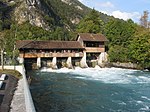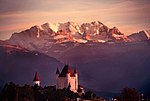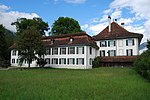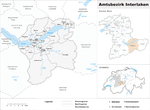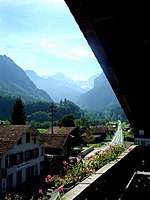Heimwehfluhbahn
1906 establishments in SwitzerlandBernese OberlandEurope rail transport stubsFunicular railways in SwitzerlandHeritage railways in Switzerland ... and 4 more
Metre gauge railways in SwitzerlandRailway lines opened in 1906Switzerland transport stubsTransport in Interlaken
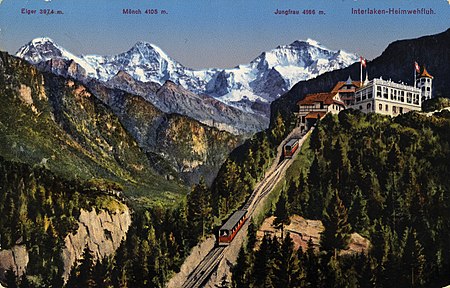
The Heimwehfluhbahn (DIH) is a funicular at Interlaken in the Swiss Canton of Bern. It runs to the top of the nearby Heimwehfluh hill at an altitude of 680 metres (2,230 ft) above sea level. The funicular provides access to the hilltop restaurant, an observation tower, an O scale model railway, a children's playground and a bobsleigh run (a second one existed but has since become overgrown and unused).
Excerpt from the Wikipedia article Heimwehfluhbahn (License: CC BY-SA 3.0, Authors, Images).Heimwehfluhbahn
Heimwehfluhstrasse,
Geographical coordinates (GPS) Address Nearby Places Show on map
Geographical coordinates (GPS)
| Latitude | Longitude |
|---|---|
| N 46.6758 ° | E 7.8503 ° |
Address
Heimwehfluhstrasse 64
3800
Bern, Switzerland
Open on Google Maps




